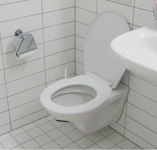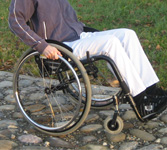SCIM - Spinal Cord Independence Measure
The Spinal Cord Independence Measure (SCIM) is a disability scale developed specifically for patients with spinal cord lesions. The SCIM was developed by Catz and Itzkovich in 1997 [1] and was further developed and adapted since then [2-6]. The SCIM focuses on the amount of used personal assistance and/or the use of technical aids regarding the scoring of a subjects' independence.
In the EMSCI project the actual version SCIM 3 is used [3]. The SCIM includes the following areas of function:
- self-care (subscore (0-20))
- respiration and sphincter management (0-40)
- mobility (0-40)
Each area is scored according to its proportional weight in these patients' general activity. The final score ranges from 0 to 100.



images/stories/1. Catz, A., et al., SCIM--spinal cord independence measure: a new disability scale for patients with spinal cord lesions. Spinal Cord, 1997. 35(12): p. 850-6.
2images/stories/. Bluvshtein, V., et al., SCIM III is reliable and valid in a separate analysis for traumatic spinal cord lesions. Spinal Cord. 49(2): p. 292-6.
3images/stories/. Itzkovich, M., et al., The Spinal Cord Independence Measure (SCIM) version III: reliability and validity in a multi-center international study. Disabil Rehabil, 2007. 29(24): p. 1926-33.
4images/stories/. Catz, A., et al., [SCIM--spinal cord independence measure (version II): sensitivity to functional changes]. Harefuah, 2002. 141(12): p. 1025-31, 1091.
5images/stories/. Catz, A., et al., The spinal cord independence measure (SCIM): sensitivity to functional changes in subgroups of spinal cord lesion patients. Spinal Cord, 2001. 39(2): p. 97-100.
6images/stories/. Catz, A., et al., The Catz-Itzkovich SCIM: a revised version of the Spinal Cord Independence Measure. Disabil Rehabil, 2001. 23(6): p. 263-8.

